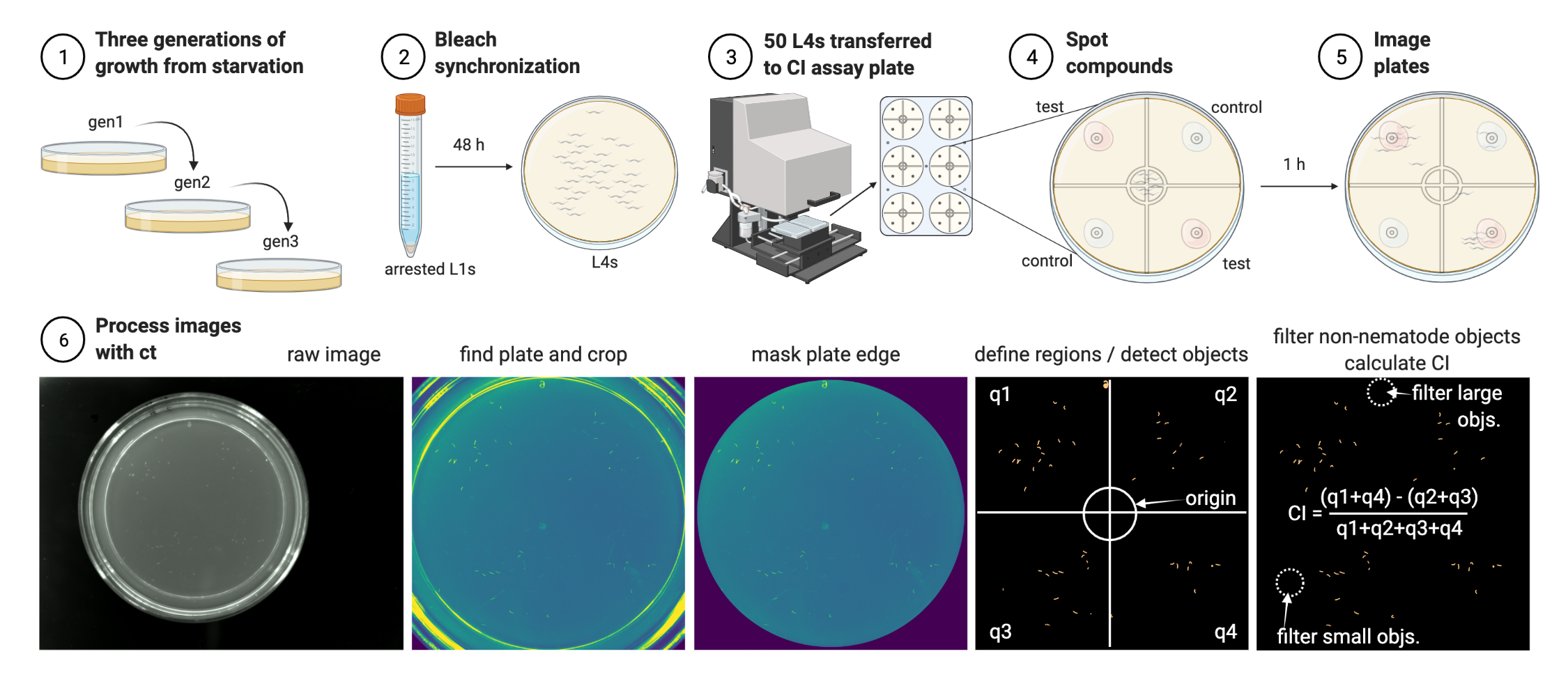Background
Wild nematodes can sense and react to all sorts of chemical cues in their natural environment. When a nematode moves towards a particular cue, it’s displaying a behavior known as chemotaxis. One of the most common ways to study chemotaxis in the lab is to use a Chemotaxis Assay. In these assays, researchers transfer many nematodes to the center (origin) of a circular agar plate then observe how the nematodes respond to a chemical located on periphery of the plate. The test compound is spotted on the plate a set distance away from the origin in two of four quadrants on the plate, the other quadrants are spotted with a control solution (diluent only). After the animals react to the cues, researchers calculate the chemotaxis index (CI), which describes the behavioral response as a range from 1 (maximum attraction) to -1 (maximum avoidance).
The problem is that traditional chemotaxis assays have low throughput because researchers must manually setup experimental populations and score CIs.
To fix this issue, my collaborators and I came up with an automated methodology that uses liquid-handling robots to transfer nematodes to plates and a custom image analysis package, ct, to automate the scoring of CIs from plate images. You can see our workflow in the figure below.

To see more detail checkout our recent manuscript and the GitHub repo.